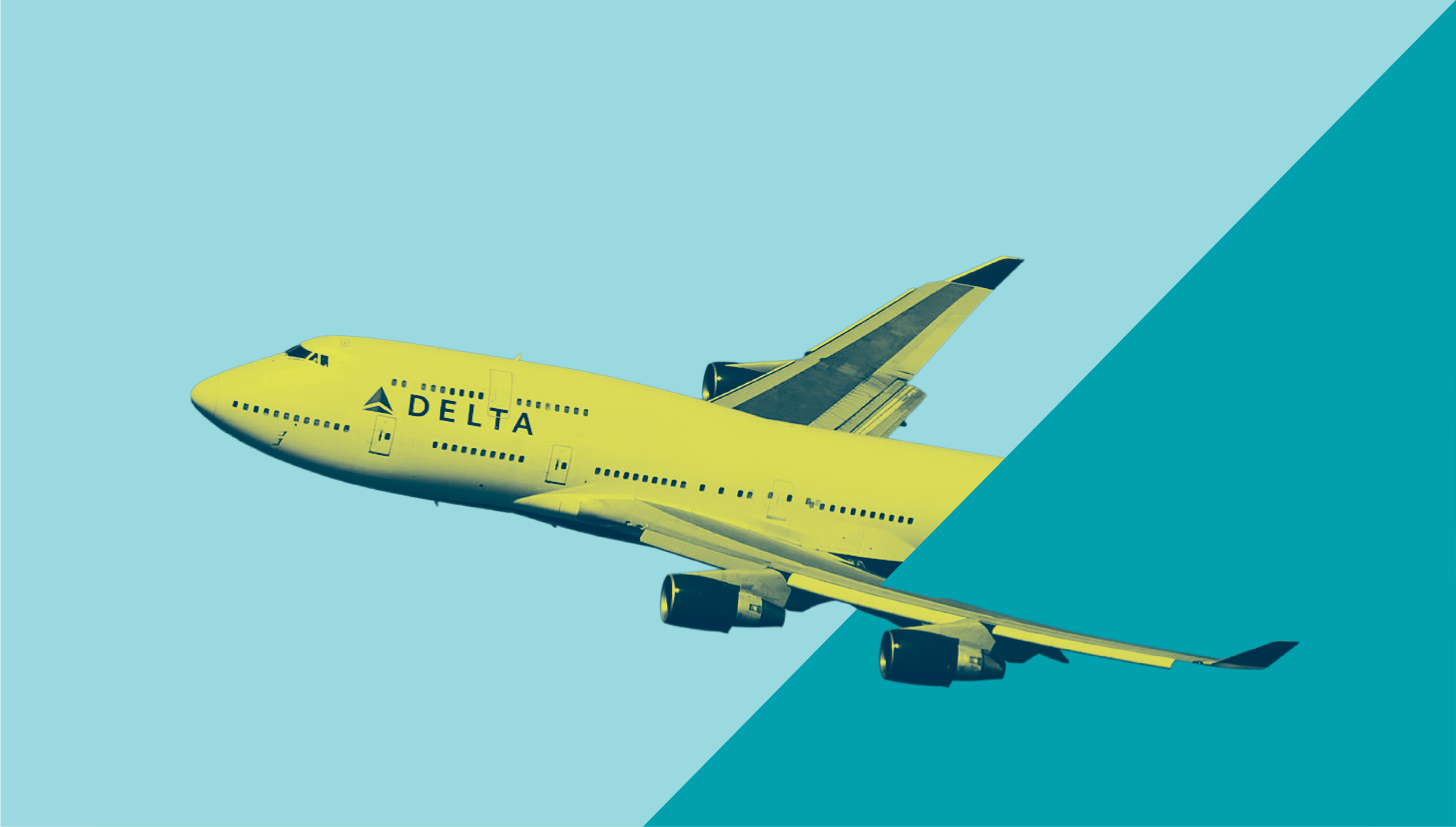
Technology Sponsor,
Digital Hall of Fame
It would be easy to mistake Delta Air Lines’ first slogan—“Speed, Comfort, and Safety” (1929)—for one it might use today, as the United States’ oldest airline continues to be known and lauded for all three.
-
1925
Founded as Huff Daland Dusters in Macon, Georgia
-
1928
Huff Daland Dusters becomes Delta Air Service under C.E. Woolman
-
1940
Adds flight attendants to flight crews
-
1955
Pioneers the hub and spoke system
-
1961
Flies first nonstop service from Atlanta to Los Angeles
-
1982
Employees raise US$30 million to purchase "The Spirit of Delta," the airline's first Boeing 767
-
1996
Transports the Olympic flame from Athens, Greece, to Los Angeles, California
-
2007
Defeats hostile takeover attempt by U.S. Airways
-
2022
Becomes Technology Sponsor to the digital Global Business Hall of Fame
Delta Air Lines was founded in 1925 as Huff Daland Dusters, a commercial agricultural flying service based in Macon, Georgia. By 1927, the company had relocated its headquarters to Louisiana and boasted the largest privately owned fleet in the world. Crop-dusting operations extended from Florida to Arkansas and California to Mexico, and it operated the first international mail and passenger flights along the west coast of South America for Peruvian Airlines.
In 1928, C.E. Woolman, who joined the company in 1925, and Louisiana banker Travis Oliver purchased Huff Daland Dusters’ assets. The name “Delta” was coined by Catherine Fitzgerald, Woolman’s longtime assistant, inspired by the company’s location in the Mississippi Delta region of the United States. For the next seven years, Delta Air Service expanded both mail and passenger service across the southern United States. In 1934, the name changed one final time to Delta Air Lines.
When the Second World War erupted, Delta modified 916 of its own aircraft and overhauled more than 1,000 engines and instruments as part of the war effort. It also trained U.S. Army pilots and mechanics, and operated cargo routes to serve the military.
The 1940s saw Delta lauded with accolades, including recognition from the National Safety Council for 10 years of service without a passenger or crew fatality, the one-millionth passenger, and the first nonstop flight from Chicago to Miami.
In 1953, Delta merged with Chicago and Southern Air Lines and began to offer international flights to the Carribbean and Caracas. Continuing its efforts to expand available routes, Delta pioneered the hub and spoke system in 1955. The practice, now ubiquitous in the airline industry, involves flights from smaller airports delivering passengers to large central airports to make connections for longer trips.
“Any individual or business that is completely honest in all its dealings is likely to succeed.”
Principal founder C.E. Woolman
Logo, 1929
Logo, 1945–1953
Logo, 1962–1993
Logo, 2007–present
Advertisement, 1920s
Delta has been a key player in the evolution of the aviation industry since the beginning. Starting in 1956, all planes were equipped with radar; 1962 saw the launch of an instant-reservation system, the predecessor to the 1964 “Deltamatic” reservation system. Continuing its tradition of “firsts,” Delta became the first commercial airline to fly from Los Angeles to Atlanta in less than three hours in 1962.
Advertisement, 1994
Delta officially ceased crop-dusting operations in 1966, turning its focus to expand passenger and cargo services. By 1970, Delta’s entire passenger fleet was comprised of jets, including the luxury double-decker Boeing 747. Its guaranteed cargo service, Delta Air Express, launched in 1975.
Important mergers and partnerships throughout the 1970s and 1980s enabled Delta to expand route offerings farther than ever before, including its first trans-Atlantic service from Atlanta to London and later to Frankfurt, Germany, as well as partner flights to Hawaii. The 1987 merger with Western Airlines made Delta the fifth-largest carrier in the world. That year also saw the first trans-Pacific flight offerings, taking passengers from Portland, Oregon, to Tokyo.
In the spirit of partnership, Delta, Northwest Airlines, and TWA combined reservation systems in 1990 to create WORLDSPAN Travel Information Services. One year later, Delta acquired Pan Am’s trans-Atlantic routes and the Pan Am Shuttle, officially becoming a global carrier. In 1998, Delta and SwissCargo forged the first international cargo alliance. Two short years later, the global alliance SkyTeam launched, bringing together Aeromexico, Air France, Korean Air, and Delta for a key international partnership, offering passengers more international routes than ever. In 2003, Delta, Continental, and Northwest partnered to create the largest domestic codeshare alliance in the US.
Visit the Delta Flight Museum
The 9/11 attacks rocked the global economy and the airline industry, leaving no carrier unscathed. Delta faced an uncertain future on a long road to financial recovery in the wake of the 2001 attacks. In 2005, the company filed for bankruptcy. Two years later, U.S. Airways attempted a hostile takeover, but Delta prevailed, emerging from its bankruptcy filing and refiling on the New York Stock Exchange in 2007. Not only did the airline succeed financially, but it also led all network carriers in on-time performance.
Huff Daland Duster Petrel 31, in use 1925–1948
Travel Air S-6000-B, in use 1929–1930
Convair 440, in use 1956–1970
Along the road to recovery, Delta offered service to more destinations around the world than any other airline, including 124 nonstop routes, in 2006. After an expanded trans-Atlantic joint venture with Air France–KLM in 2009, Delta became the only U.S. airline to serve six continents, introducing non-stop flights from Los Angeles to Sydney, Australia. Delta also completed the integration of Northwest Airlines’ frequent flyer program, which it had acquired the year before, into its SkyMiles program, creating the world’s largest customer-loyalty program.
Fortune named Delta one of the most admired companies in 2014. In addition to being a global industry leader, the airline is a beloved employer. In 1982, after Delta suffered significant financial losses, employees raised US$30 million in payroll deductions to help the airline purchase its first Boeing 767, “The Spirit of Delta.” In 2016, under the leadership of CEO Ed Bastian, Delta paid its 84,000 employees US$1.5 billion in profit shares, the most in U.S. history to that point. In 2020, the airline delivered US$1.6 billion in profit share to employees. As of 2016, Delta committed 1% of its yearly net income to charities.
Beginning in March 2020, Delta committed itself to carbon neutrality. One if the company’s goals it is to replace 10 percent of its jet fuel with sustainability aviation fuel by the end of 2030. Waste reduction is another key component of Delta’s commitment to sustainability, including reduction of single-use plastics, making the most of recyclable materials, on-the-ground donations of food, blankets, amenity kits, and other provisions; and even upcycling 50,000 pounds of old uniforms for waste-to-energy recovery.
Delta passengers, 1929
Airline passenger, 1965
In-flight service, 1975
“While many airlines fly the same aircraft, travel to popular destinations and use similar tools, it’s our people and the values-led culture they create that set Delta apart.”
1940s
1950s
2020
A Global Force for Good
Today, we’re looking for Laureates who are making the world a better place. As such, the Global Business Hall of Fame prioritizes nominees who are working toward the Global Goals for Sustainable Development (SDGs), as we reinforce to JA students that they have the power to be a force for global good.


















